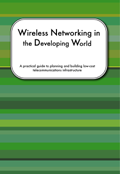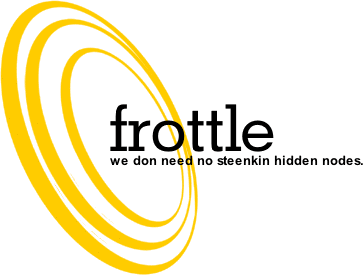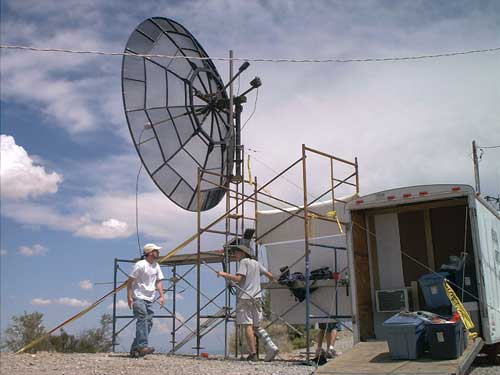Types of links
Wireless networks can be arranged in one of these three logical configurations:
- Point-to-Point
- Point-to-Multipoint
- Multipoint-to-Multipoint
Point-to-Point
The simplest connection is the point-to-point link.
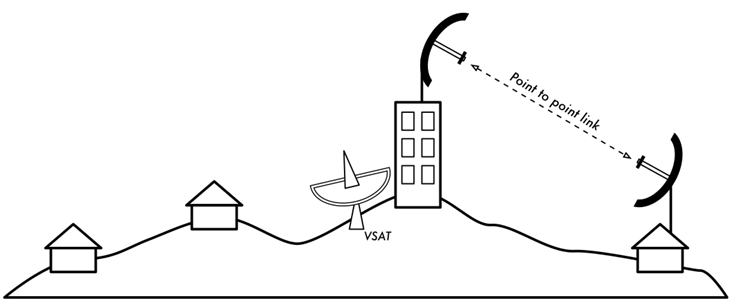
Point-to-Multipoint
When more than one connection communicates with a central point, this is a point-to-multipoint network.
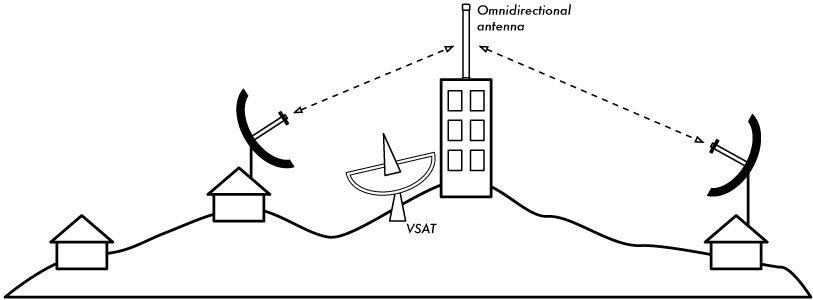
Multipoint-to-Multipoint
When any node of a network may communicate with any other, this is a multipoint-to-multipoint network (also referred to as an ad-hoc or mesh network)
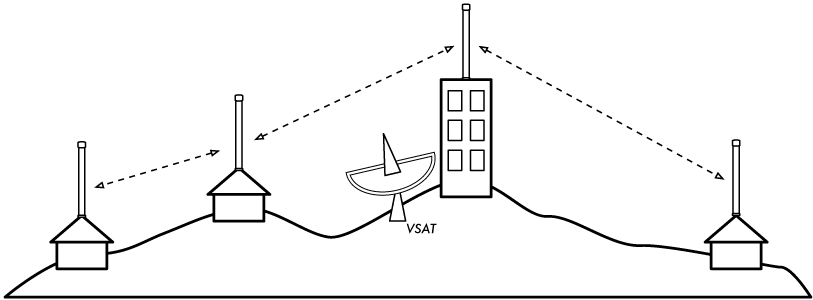
Radio modes
802.11 cards can be operated in one of these modes:
- Master (AP)
- Managed (Client)
- Ad-hoc
- Monitor
Radios may only operate in one mode at a time*
Typical (intended) use

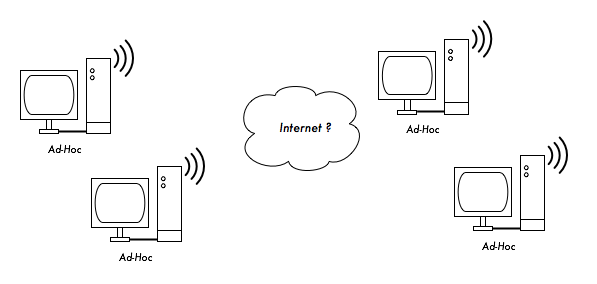
Master mode
Master mode (also called AP or infrastructure mode) is used to create a service that looks like a traditional access point. The wireless card creates a network with a specified name (called the SSID) and channel, and offers network services on it.
Wireless cards in master mode can only communicate with cards that are associated with it in managed mode.
Managed mode
Managed mode is sometimes also referred to as client mode. Wireless cards in managed mode will join a network created by a master, and will automatically change their channel to match it.
Clients using a given AP are said to be associated with it. Managed mode cards do not communicate with each other directly, and will only communicate with an associated master.
Ad-hoc mode
Ad-hoc mode creates a multipoint-to-multipoint network when there is no master or AP available.
In ad-hoc mode, each wireless card communicates directly with its neighbors. Nodes must be in range of each other to communicate, and must agree on a network name and channel.
Montior mode
Monitor mode is used by some tools (such as Kismet) to passively listen to all radio traffic on a given channel. This is useful for analyzing problems on a wireless link or observing spectrum usage in the local area. Monitor mode is not used for normal communications.
802.11 Radio Modes in action

The TCP/IP model
802.11 provides a link-local connection.
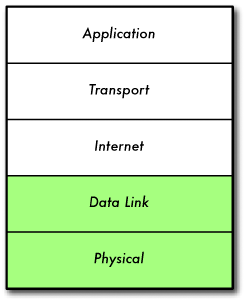
Bridged networking
In a simple local area wireless network, a bridged architecture is usually adequate.
- Very simple configuration
- Roaming works very well
- Increasingly inefficient as nodes are added
- All broadcast traffic is repeated
- Virtually unusable on very large wide-area networks
The bridged AP
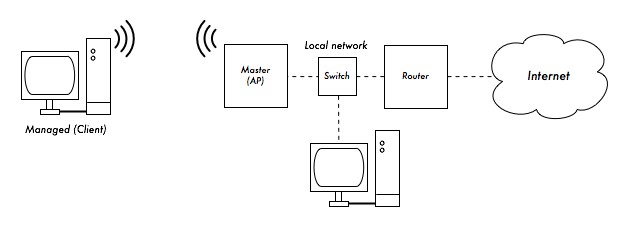
Routing
Large networks are built by applying routing between nodes.
- Static routing is often used on point-to-point links
- Dynamic routing (such as RIP or OSPF) can be used on larger networks, although they are not designed to work with imperfect wireless links
- Mesh routing protocols (OLSR, HSLS, AODV) work very well with wireless networks, particularly when using ad-hoc.
Relaying traffic
In ad-hoc mode, all radios can communicate with each other as long as they are in range. They will not relay traffic for other nodes without an additional routing protocol.
In infrastructure mode, clients must be within range of an access point. The AP will relay traffic between all associated clients, but clients cannot talk to each other directly.
AP vs. Ad-Hoc

Mesh = Ad-hoc + Routing
A mesh network (implemented with 802.11 equipment) is essentially a group of radios operating in ad-hoc mode, with some kind of routing applied.
Many mesh routing protocols (such as OLSR) may be applied to any physical network, including Master / Managed nodes, or even Ethernet.
Dynamic mesh

Repeaters
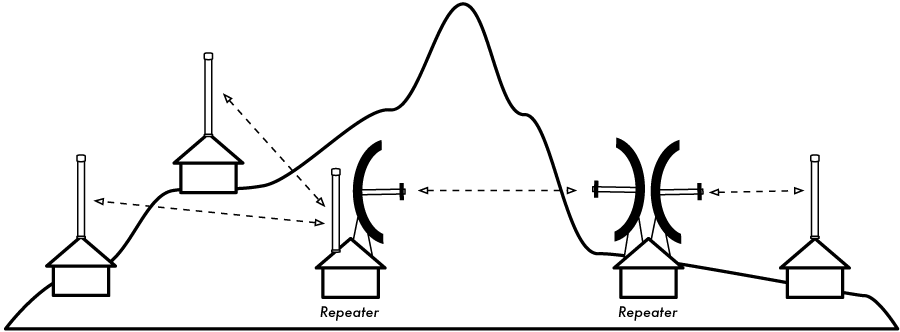
Problems with wide-area 802.11
802.11 networks were designed to operate at relatively short distances (up to a couple of hundred meters). Range can be extended significantly by using high gain antennas, but this is not a complete solution.
Over long distances, a number of problems become apparent that are not handled well by the 802.11 protocol itself.
The "Hidden Node"
When two clients are in range of the same access point but not each other, their transmissions can interfere with each other. This condition is called a hidden node problem.
- Hidden node is alleviated somewhat by CTS/RTS
- Specify a maximum packet size, above which CTS/RTS is used
- CTS/RTS is not perfect, but can help at a cost of overall throughput.
Timing issues
Due to the very fast timing of 802.11 frames, speed of light becomes an issue at long distances. At approximately 15 km, standard timings are too short for acknowledgements to be received.
Some cards and drivers (such as Atheros) allow timings to be adjusted, permitting very long distance communications.
Credits
Portions of this talk were adapted from Wireless Networking in the Developing World, http://wndw.net/
